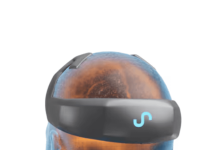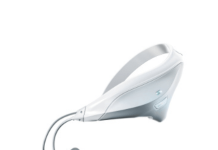US-based equipment manufacturer Photopharmics has announced the initiation of its ‘Celeste light for PD’ clinical trial investigating the Celeste phototherapy device.
The US Food and Drug Administration (FDA)-approved device targets photoreceptors in the eye responsible for circadian signalling. Research has shown that Parkinson’s disease can damage the retina and impact the circadian system leading to symptoms such as trouble sleeping, cognition, depression, and fatigue.
Related: Novocure’s TTFields device slows metastasis in NSCLC
The six-month trial will assess the non-invasive device in 300 patients with Parkinson’s, which can be used during usual evening activities. Celeste showed improvements in non-motor symptoms, and in the quality of life for Parkinson’s patients in previous clinical trials, such as the LIGHT-PD trial (NCT04453033) according to PhotoPharmics’s chief scientific officer Dan Adams.
“As patients reported in our prior trial, this may be the only treatment that improves functional abilities in PD when administered on top of current medication. We recently presented our new trial design to the FDA with a favourable review,” added Adams.
The FDA granted breakthrough device designation to Celeste back in 2020. The device is intended to be used in combination with standard dopaminergic therapy and is designed primarily for home use.
Parkinson’s disease is a progressive neurodegenerative disorder affecting movement, characterised by tremors, stiffness, and impaired balance and coordination. According to a report on GlobalData’s Pharma Intelligence Center, the number of Parkinson’s cases will grow to nearly three billion in 2029 in the seven major markets (UK, US, France, Germany, Italy, Spain, and Japan), growing at an annual growth rate (AGR) of 2.32% from 2.4 billion cases in 2019.
Phototherapy refers to the use of light to treat physical or mental illness. Other companies are using phototherapy to treat diseases – for instance, earlier this year, Photobiomodulation device company LumiThera announced the launch of a new clinical study designed to collect safety and efficacy data from patients living with dry age-related macular degeneration treated with light-based therapy.






